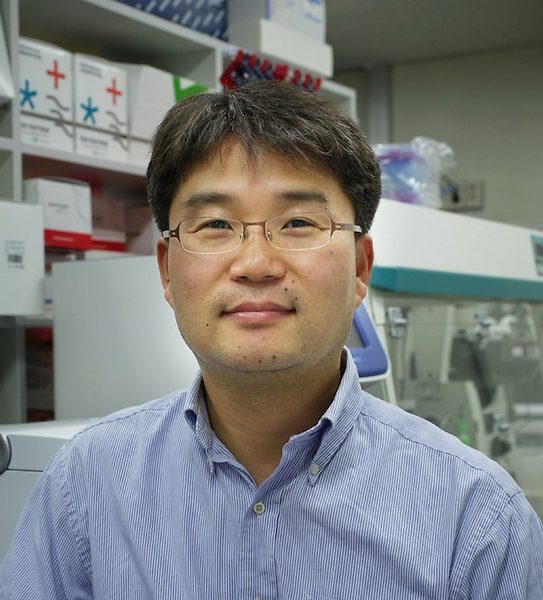Seminar "Origins of Algal Plastids" by Prof. Yoon

Date
Location
Description
Seminar "Origins of Algal Plastids"
Speaker: Professor Hwan Su Yoon
Affiliation: Department of Biological Sciences, Sungkyunkwan University, Korea
Abstract:
Organellogenesis and its associated endosymbiotic gene transfer (EGT) are driving forces of eukaryote genome evolution. However, little is known about early events in plastid origin because the primary plastid endosymbiosis in Plantae (red, green, and glaucophyte algae and plants) occurred >1 billion years ago. In this seminar, I will introduce red algal diversity and evolutionary history as a major primary endosymbiosis group, then compare a recent case of another primary endosymbiosis in photosynthetic Paulinella to better understand early stage of algal origin.
Red algae (Rhodophyta) include more than 7,000 species thrive in marine and freshwater habitats. Red algae play a critical role in the eukaryote tree of life as the donor through secondary endosymbiosis of the plastid that subsequently gave rise to chlorophyll-c containing groups such as diatoms, dinoflagellates, haptophytes, and cryptophytes. However, only limited genome data are available from economically important red algal species. Here, we report the complete nuclear genome of the agarophyte Gracilariopsis chorda and present genome comparisons with other algal species. We also assembled the plastid and mitochondrial genomes from the largest dataset including 45 from the red algae to elucidate the evolution of these organelles. We find extreme conservation of plastid and mitochondrial genome structures in the major lineages of Florideophyceae. Only three minor structural types were detected in this group that are explained by recombination events of the duplicated rRNA operons. A similar high level of structural conservation (however, with different gene content) was found in seed plants. Three major plastid genome structures were identified from angiosperms and gymnosperms. Our results provide a comprehensive accounting of plastid gene loss and genome rearrangement events within Archaeplastida and lead to one major conclusion. From a pool of highly rearranged plastid genomes in red and green algae, the aquatic (Florideophyceae) and terrestrial (seed plants) multicellular lineages display extreme conservation in plastid genome architecture. We speculate that the origin of complex reproductive tissue types in red seaweeds and in seed plants likely set in place developmental pathways linking the nuclear and organelle genomes that constrained evolution of the photosynthetic compartment.
The photosynthetic filose amoeba Paulinella provides a unique model for understanding endosymbiotic gene transfer (EGT), organelle evolution, and the impact of plastid acquisition on lineage diversification because of the relatively recent origin of its plastid. Multigene phylogenetic analysis and genome comparisons demonstrate that Paulinella chromatophora acquired its plastid via cyanobacterial primary endosymbiosis about 90-140 million years ago. Using single cell genomics and next-generation sequencing methods, we sequenced plastid and nuclear genome from the photosynthetic Paulinella micropora, which identified as a new photosynthetic species. P. micropora diverged from P. chromatophora with regard both to morphology and differential gene loss in the plastid genome. Detail feature of plastid genomes and EGT genes and evolutionary history of Paulinella will be discussed.
Biography:
Associate Professor, Department of Biological Sciences, Sungkyunkwan University, 2066 Seobu-ro, Jangan-gu, Suwon 16419, Korea.
Professional Preparation: Chungnam National University, Biology, B. Sc. 1992; Chungnam National University, Biology, M.S. 1994; Chungnam National University, Biology, Ph.D. 1999; University of Iowa, Iowa: Post Doctoral Fellow with D. Bhattacharya, 2000-2004; University of Iowa, Iowa, Senior Scientist with D. Bhattacharya, 2004 – 2007; Bigelow Laboratory for Ocean Sciences, Maine, Principle Investigator (Senior Research Scientist), 2007 – 2011.
Other Professional Activities: Vice President of the International Society of Protistologists (2012 – 2013); Associate Editor, Phycologia (2012 – 2014); Editorial Board Member, Journal of Phycology (2011 – 2013), Algae (2010 – 2016), Botanica Marina (2008 – 2012).
Research Interests: Yoon’s research interests are on the eukaryotic biodiversity, phylogeny, and genome evolution with publications of 50 peer-reviewed papers and book chapters. He has worked on genome evolution of the red algae and red algal plastid descendants (e.g., the cryptophytes, haptophytes, stramenopiles, dinoflagellates). He is leading several genome projects including Paulinella and 15 red algal species. Yoon and his colleagues recently developed the single cell genome sequencing from individual cells of protists. Single cell genomics (SCG) approach opens novel opportunities to study protist, prokaryote, and viral interactions in situ, without cultivation artifacts. Using SCG, the first eukaryotic Picozoa genome was published in Science (2011) with genomes from novel single stranded DNA virus and algal viruses, which were engulfed in a food vacuole.
Subscribe to the OIST Calendar: Right-click to download, then open in your calendar application.



